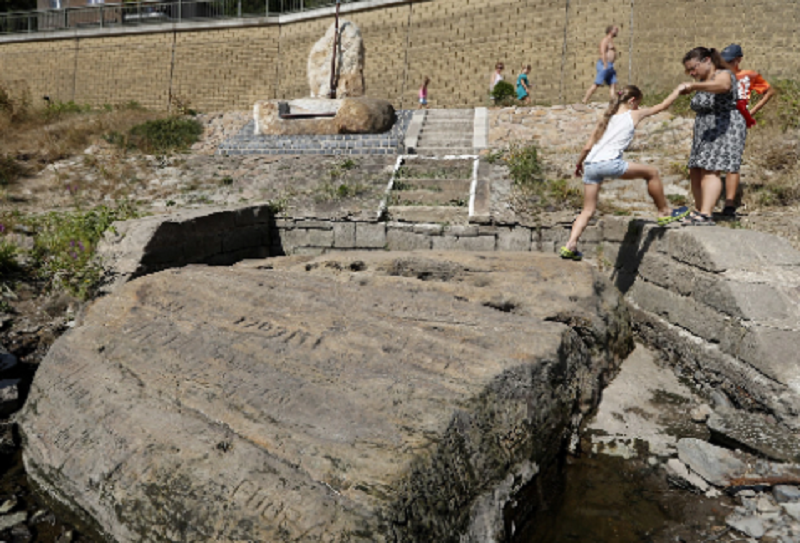A treasure consisting of a lot of gold coins and weapons buried under the Danube for hundreds of years suddenly appeared.
Hungarian archaeologists “hit the trick” when they discovered a treasure trove of precious ancient coins from the 16th, 17th, and 18th centuries, exquisitely carved ancient daggers, and even a cannon.
Archaeologists are collecting artifacts on the riverbank – photo: HUNGARY TODAY
After hundreds of years buried deep in the river bottom, the above artifacts suddenly appeared in a ghostly way and were discovered by an amateur archaeologist a few days ago in the riverbank area near Érd, 25 minutes from the capital Budapest. kilometer.
According to Mr. Gábor Gulyás, Director of the Ferenczy Museum, the unit that took over and excavated the above treasure, the reason why the treasure lost for hundreds of years suddenly appeared in a prominent position is the drought phenomenon raging in the region. Europe, bringing the river water level to a record low and the above artifacts were exposed.
Some ancient coins from treasure on the Danube bank – photo: HUNGARY TODAY
This treasure was determined to belong to a “ghost ship” that may have broken up and is hidden somewhere around the area. Evidence shows that it was a large trading ship that disappeared in the 18th century, buried under the Danube with many antiques. Archaeologists are currently tracking the treasure and hope to soon find the location of the ship.

The area where treasure from the “ghost ship” was found – photo: DAILY MAIL
Archaeologists say that among the coins are many extremely rare coins from the era of Popes Clement XII and Louis XIV. Many other coins are made from 22 carat gold. They and the weapons are all extremely valuable antiques.
This is not the first time the drought plaguing Europe has brought a boon to archaeologists. At the end of August, on the banks of the Elbe River in the Czech Republic, a stone slab bearing the mysterious words: “When you see me, cry” suddenly appeared.
Stone bearing the message “When you see me, cry” in the Czech Republic – photo: AP
Test results showed that the message on the banks of the Elbe River was carved in 1616 and was actually a drought warning device. The stone tells you to “cry” because when it is revealed, the river water level has dropped very low and the people are about to go through a difficult period due to drought.





